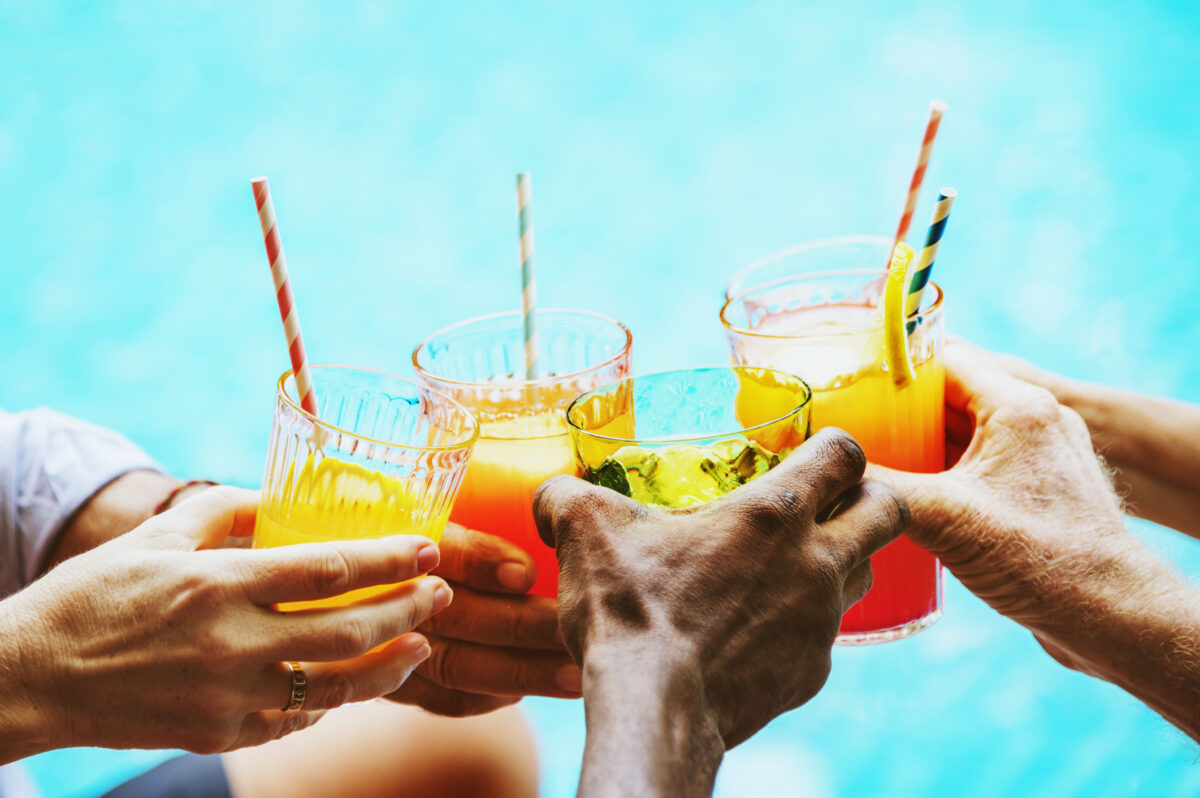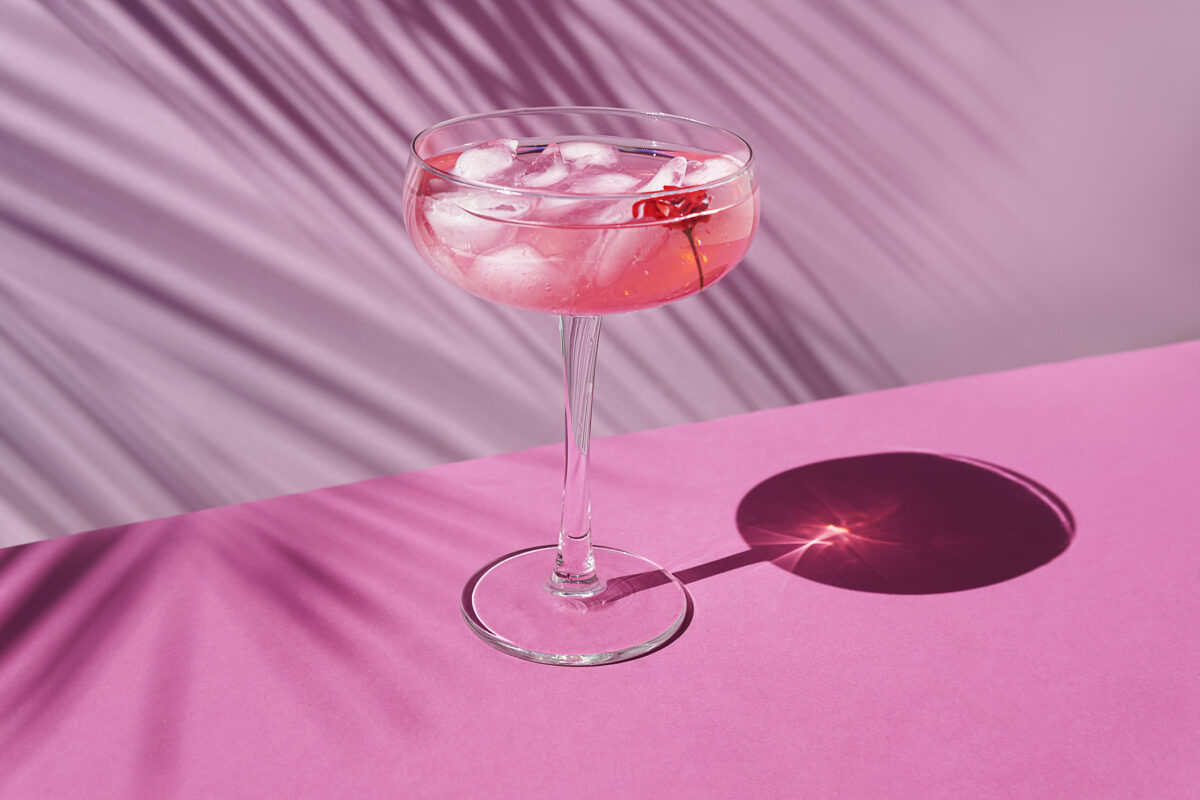Non-alcoholic gin: here’s everything you need to know

Whether you simply don’t drink or you’re trying out Dry January, if you’re looking for something other than cola and lemonade to drink with your friends, non-alcoholic gin is a fantastic option. With a huge range of options available, non-alcoholic gin is just as versatile as the real thing; but can it really be called gin?
Non-alcoholic gin is an increasingly popular drink so, below, we explain how it’s made, what it tastes like, and whether or not it is even worth making the switch to the non-alcoholic version.
What is non-alcoholic gin?
First things first, let’s address the elephant in the room: is non-alcohol gin still gin? The answer is, technically, no! Non-alcoholic gin drinks are specially designed to look and taste very similar to real gin, but with very little to no alcoholic content.
Legally, real gin must have an alcohol level (ABV) of at least 37.5%, whereas non or low, alcohol gin typically has an ABV of between 0 and 5%. This means that non-alcoholic gin can’t legally call themselves gin. This may help to explain why you’ll notice that many of the names and labels of these non-alcoholic gins do not refer to themselves as such!
How is it made?
There’s a variety of ways to make low and non-alcohol gins, and many are now being produced by gin distillers who make alcoholic versions too. These methods involve many of the same processes that are used to create real gin, but there are a few crucial differences in how the non-alcoholic versions are created.
For low alcoholic gin, these beverages are often made using the classic distillation process – the same way how full-strength gains are made. During this process, plain alcohol, also known as a neutral grain spirit, is added to a copper metal still along with various botanicals which are used to give the classic herby, spicy, fruity flavourings of real gin.
The versatility of these ingredients is one of the primary reasons why gin is such a fantastic drink, and particularly why it is available in such a variety of delicious flavours! Interestingly, gin is legally required to have juniper as the dominant flavour of gin, and the inclusion of this within low alcoholic versions helps the final product taste as similar as possible to the real thing.
Once the base spirit and any botanicals and flavourings have been added to the copper still, the liquid is heated to create an alcohol vapour. This vapour then moves through a series of tubes, is cooled to become liquid again within a distiller, and is then diluted with water. It is here where the process differs from normal gin as, with low alcoholic versions, the liquid will be more heavily diluted by adding considerably more water – whereas real gin is only diluted by about half.
What is it made from?
With the process for making low alcoholic gin freshly in mind, you may be pleased to know that the process for making non-alcoholic gins is very similar to low alcoholic versions – with the neutral spirit and botanicals being added to a copper still, followed by multiple rounds of distillation that remove the alcohol from the liquid.
Alternatively, some manufacturers completely omit the use of a base spirit in its entirety, opting instead for the maceration process. This involves botanicals being left to soak in a liquid in order for them to develop flavour within the liquid that isn’t dissimilar to real gin.
These processes can actually change the mouthfeel of the liquid too, giving the final product a more ‘ginny’ character on your palette.
What does non-alcoholic gin taste like?
Similarly to real and low alcohol gin, non-alcoholic gins vary widely in the flavours they offer. While most do manage to capture the signature herbaceous and slightly citrusy notes of your standard gin, brands like Seedlip have managed to develop flavours that emulate many of the different styles of gin you find in your local supermarket: spicy, fruity, floral, and more!
One thing to be aware of is that you shouldn’t go in expecting there to be any change in flavour whatsoever when comparing real and non-alcoholic gins. Apart from the lack of warmth due to the omission of alcohol, they are very noticeably different drinks indeed.
Because these gins are often produced with the same love and attention as their alcohol-containing counterparts, they use the same premium ingredients and high-quality processes – meaning that they are designed to be a like-for-like swap. When thinking about how best to drink non-alcoholic gins, don’t overthink it we say! Try out your normal gin and tonics or gin and lemonades, and get more creative from there!
If you’re cutting down on drinking, stopping drinking completely, or just trying it out, many non-alcoholic gins do make for an enjoyable and refreshing alternative that’s the closest thing you’ll get to the real thing.
Which brands make the best non-alcoholic gin?
As the demand for non-alcoholic drinks has soared in recent years, the variety and quality of non-alcoholic options have certainly improved tenfold. When it comes to non-alcoholic gins, including non-alcoholic pink gin here are a few of the best non-alcoholic gin brands on the market today:
ZEO Non-Alcoholic Spirit Botanical Dry:
An alternative to gin or vodka which has been designed by ex-artisan bartender Simone Caporale, ZEO provides a citrusy and warmingly spicy kick to any drink. Drink it on the rocks with a twist of lemon, or combine it with mixers for sophisticated alcohol-free cocktails.
New London Light:
A gin-inspired alcohol-free spirit which uses juniper, orange, cardamom, and other botanicals for a deliciously perky and citrusy final result. Combine with tonic water for an elegant non-alcoholic G&T, or combine with lemonade for a sweet and summery treat.
Seedlip Grove 42:
Zero alcohol pioneer Seedlip developed this alcohol-free gin alternative with a combination of aromatic flavours that really tantalise the taste buds. Mediterranean orange, lemon peel, ginger, lemongrass and sansho peppercorns all give a citrus and peppery finish when combined with tonic water and garnished with orange peel.
Why do people drink non-alcoholic gin?
Did you know that non-alcoholic gins are particularly popular with the younger generation? Among this group, there is a growing trend in both abstaining from drinking completely and simply ensuring they drink in moderation.
According to research published in the journal BMC Public Health in 2018, the number of people aged between 16 to 24 who cut alcohol out of their lives completely rose from 18% to 29% in just ten years!
These findings are particularly interesting in how younger people see alcohol, and providing this demographic with a delicious alcohol-free option that tastes similar to the real thing is a fantastic thing.
These non-alcoholic gins are also great in situations other than casual drinks for non-drinkers – if you’re a designated driver, you’re pregnant, or simply trying to ut down on your consumption, non-alcoholic gins are a great way of still being able to enjoy the delicious botanical notes of your favourite gin cocktails or gin and tonic water or lemonade.
FAQs
Can you drink non-alcoholic gin when pregnant?
There is a possibility that non-alcoholic drinks, such as non-alcoholic gin, may contain higher ethanol levels than what is indicated on their labels. Therefore, as there is currently no known “safe level” for alcohol consumption during pregnancy, abstaining from non-alcoholic beverages which are inspired by the real thing would eliminate any risk of developing foetal alcohol spectrum disorder.
How many calories are in non-alcoholic gin?
100ml of non-alcoholic gin contains 0g total carbs, 0g net carbs, 0g fat, 0g protein, and 7 calories – roughly the same number of calories as half a plain crisp.








